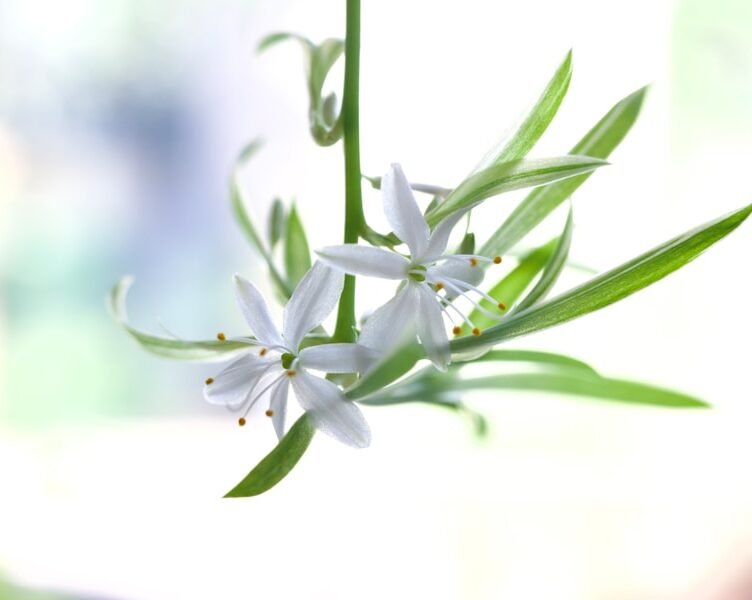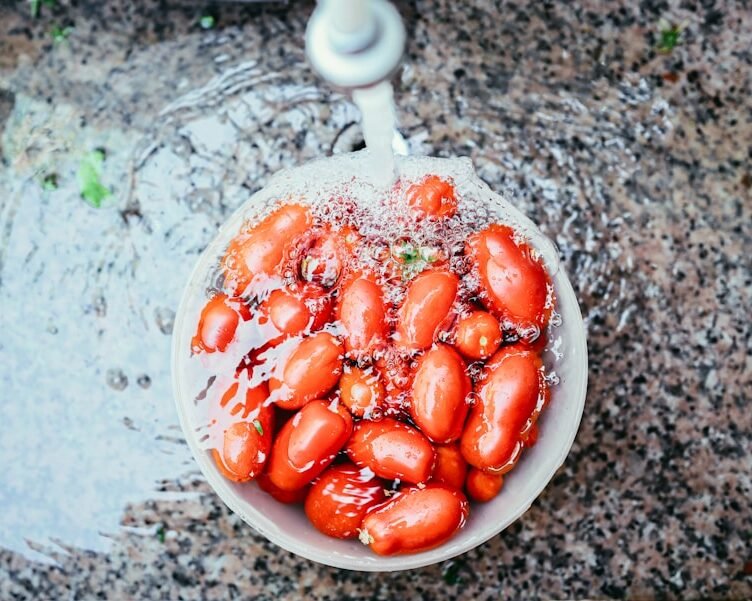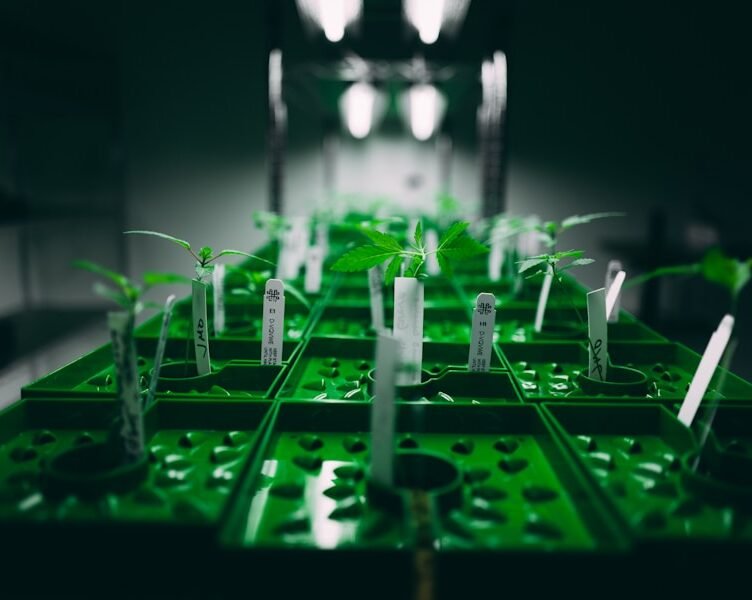Maintaining a thriving hanging garden requires careful plant selection. Not all plants are suitable for hanging gardens, as they must adapt to confined spaces and aerial suspension. When choosing plants, consider their size, growth habits, and light requirements.
Trailing or cascading plants, such as petunias, ivy, ferns, and succulents, are well-suited for hanging baskets and create a lush display. Ensure the plants you select are compatible with the light levels in your hanging garden’s location. To create a harmonious and low-maintenance hanging garden, consider the individual needs and requirements of each plant.
Different plants have unique water and nutrient requirements, so selecting plants with similar needs simplifies maintenance. Additionally, consider the overall aesthetic you want to achieve and choose plants that complement each other in terms of color, texture, and growth habit. By carefully selecting plants, you can create a stunning and cohesive display that will thrive and bring joy for years to come.
Key Takeaways
- Choose plants that are suitable for hanging gardens and consider their light and temperature needs
- Proper watering and drainage techniques are essential for maintaining a healthy hanging garden
- Regularly monitor soil health and nutrient levels to ensure the plants are getting the necessary nutrients
- Pruning and trimming are important for promoting healthy growth in hanging gardens
- Prevent pests and diseases by regularly inspecting and maintaining your hanging garden
Proper Watering and Drainage Techniques
Watering Techniques for Hanging Gardens
Proper watering and drainage are crucial for maintaining a healthy hanging garden. Since hanging gardens are confined to a small space, regular watering is necessary to ensure plants receive enough moisture. However, it’s equally important to avoid overwatering, which can lead to root rot and other issues. When watering, make sure to water thoroughly until water runs out of the bottom of the container, but allow excess water to drain away to prevent waterlogged soil. Be mindful of the specific water needs of each plant in your hanging garden, as some may require more frequent watering than others.
The Importance of Well-Draining Soil
In addition to proper watering techniques, the type of soil used in your hanging garden is also crucial. A well-draining potting mix is essential for maintaining healthy plants, as it allows excess water to drain away and prevents waterlogged soil. Look for a high-quality potting mix specifically formulated for container gardening, as these mixes provide the right balance of moisture retention and drainage.
Additional Tips for Improving Drainage
To further improve drainage and prevent water from pooling at the bottom of your hanging baskets, consider adding a layer of gravel or small stones to the bottom. This simple step can make a significant difference in maintaining a healthy and vibrant hanging garden. By using proper watering and drainage techniques, you can help ensure your hanging garden remains healthy and thriving for years to come.
Understanding Light and Temperature Needs
Another important aspect of maintaining a hanging garden is understanding the light and temperature needs of your plants. Different plants have different light requirements, so it’s important to consider the amount of light your hanging garden receives and choose plants that are suitable for those conditions. Some plants thrive in full sun, while others prefer partial or full shade, so be sure to select plants that are well-suited for the specific light levels in your hanging garden.
Additionally, consider the temperature requirements of your plants, as some may be more sensitive to extreme heat or cold than others. By understanding the light and temperature needs of your plants, you can help ensure that they receive the right conditions to thrive and remain healthy. In addition to understanding the light and temperature needs of your plants, it’s also important to consider how these factors may change throughout the year.
As the seasons change, so too will the amount of light and temperature your hanging garden receives. Be mindful of these changes and be prepared to adjust the placement of your hanging baskets or switch out plants as needed to accommodate these fluctuations. By staying attuned to the changing light and temperature conditions in your hanging garden, you can help ensure that your plants remain healthy and continue to thrive throughout the year.
Maintaining Soil Health and Nutrient Levels
| Tips for Maintaining a Hanging Garden |
|---|
| 1. Choose the right plants for your hanging garden based on the amount of sunlight and water they require. |
| 2. Use a well-draining potting mix to prevent waterlogging and root rot. |
| 3. Water your hanging garden regularly, but be careful not to overwater as it can lead to mold and mildew. |
| 4. Fertilize your plants according to their specific needs to promote healthy growth. |
| 5. Prune and trim your plants as needed to maintain their shape and encourage new growth. |
| 6. Check for pests and diseases regularly and take appropriate measures to control them. |
| 7. Rotate your hanging garden occasionally to ensure all plants receive adequate sunlight. |
Maintaining soil health and nutrient levels is crucial for keeping your hanging garden in top condition. Over time, the soil in your hanging baskets can become depleted of essential nutrients, which can lead to poor plant growth and overall health. To prevent this from happening, it’s important to regularly replenish the soil in your hanging baskets with fresh potting mix or compost.
Additionally, consider using a slow-release fertilizer or liquid fertilizer to provide your plants with the nutrients they need to thrive. Be sure to follow the instructions on the fertilizer package carefully to avoid over-fertilizing, which can lead to nutrient imbalances and other issues. By maintaining soil health and nutrient levels in your hanging garden, you can help ensure that your plants remain healthy and continue to grow and flourish.
In addition to maintaining soil health and nutrient levels, it’s also important to be mindful of any pests or diseases that may affect your hanging garden. Pests such as aphids, spider mites, and whiteflies can wreak havoc on your plants if left unchecked, so be sure to regularly inspect your hanging baskets for signs of infestation. If you do notice any pests, consider using natural pest control methods such as neem oil or insecticidal soap to eliminate them without harming your plants or the environment.
Additionally, be on the lookout for any signs of disease in your plants, such as yellowing leaves or unusual spots or growths. If you do notice any signs of disease, take action immediately by removing affected plants or treating them with appropriate fungicides or other remedies. By staying vigilant and taking proactive measures to prevent pests and diseases in your hanging garden, you can help ensure that your plants remain healthy and continue to thrive.
Pruning and Trimming for Healthy Growth
Pruning and trimming are essential tasks for maintaining a healthy hanging garden. Over time, plants in hanging baskets can become overgrown or leggy, which can detract from their overall appearance and health. To prevent this from happening, it’s important to regularly prune and trim your plants as needed to encourage healthy growth and maintain their shape and appearance.
When pruning your plants, be sure to use sharp, clean pruners or scissors to make clean cuts that won’t damage the plant. Additionally, be mindful of any dead or diseased growth on your plants and remove it promptly to prevent it from spreading or affecting the overall health of the plant. By regularly pruning and trimming your plants, you can help ensure that they remain healthy and continue to look beautiful in your hanging garden.
In addition to regular pruning and trimming, it’s also important to consider how the growth habits of your plants may change over time. Some plants may become more vigorous or spread out more than expected, which can lead to overcrowding or competition for resources in your hanging baskets. Be prepared to adjust the placement of your plants or remove any excess growth as needed to maintain a balanced and healthy display.
By staying proactive and attentive to the growth habits of your plants, you can help ensure that they remain healthy and continue to thrive in your hanging garden.
Pest and Disease Prevention in Hanging Gardens
Identifying and Eliminating Pests
Pests such as aphids, spider mites, and whiteflies can quickly infest your plants if left unchecked, leading to stunted growth, yellowing leaves, and other issues. To prevent pests from taking hold in your hanging garden, it’s essential to regularly inspect your plants for signs of infestation and take proactive measures to eliminate any pests you find. Consider using natural pest control methods such as neem oil or insecticidal soap to eliminate pests without harming your plants or the environment.
Preventing Disease
Be mindful of any signs of disease in your plants, such as yellowing leaves or unusual spots or growths. If you do notice any signs of disease, take action immediately by removing affected plants or treating them with appropriate fungicides or other remedies. By staying vigilant and taking proactive measures to prevent pests and diseases in your hanging garden, you can help ensure that your plants remain healthy and continue to thrive.
Environmental Factors to Consider
In addition to preventing pests and diseases from taking hold in your hanging garden, it’s also important to consider how environmental factors may affect the overall health of your plants. Excessive heat or humidity can create ideal conditions for pests and diseases to thrive, so be mindful of these factors and take steps to mitigate their impact on your hanging garden. Consider providing adequate air circulation around your plants by spacing them out properly or using a fan if necessary. Additionally, be sure to water your plants at the base rather than overhead to prevent excess moisture from creating a breeding ground for pests and diseases.
Tips for Regular Maintenance and Upkeep of Your Hanging Garden
Regular maintenance is key for keeping your hanging garden looking its best year-round. In addition to regular watering, pruning, and pest prevention measures, there are several other tasks you should incorporate into your maintenance routine to keep your hanging garden in top condition. For example, be sure to regularly check for any signs of wear or damage on your hanging baskets or support structures and make any necessary repairs or replacements as needed.
Additionally, consider periodically refreshing the soil in your hanging baskets with fresh potting mix or compost to replenish nutrients and improve drainage. Another important aspect of regular maintenance for hanging gardens is staying on top of deadheading spent flowers or removing any dead or diseased growth from your plants as needed. This not only helps keep your hanging garden looking tidy but also encourages healthy growth by redirecting energy into new growth rather than expending it on old flowers or damaged foliage.
Finally, be sure to regularly inspect your hanging garden for any signs of overcrowding or competition for resources among your plants. If you notice any issues with overcrowding or excessive growth from certain plants, be prepared to adjust their placement or remove excess growth as needed to maintain a balanced display. In conclusion, maintaining a healthy hanging garden requires careful attention to several key factors including plant selection, proper watering techniques, understanding light and temperature needs, maintaining soil health and nutrient levels, pruning and trimming for healthy growth, pest and disease prevention measures, as well as regular maintenance tasks such as deadheading spent flowers and checking for signs of wear or damage on support structures.
By following these tips for maintaining a hanging garden, you can help ensure that your plants remain healthy and vibrant year-round while creating a beautiful display that will be a joy to maintain and enjoy for years to come. With proper care and attention, you can create a stunning hanging garden that will bring beauty and life into any space.
FAQs
What is a hanging garden?
A hanging garden is a type of garden where plants are grown in containers that are suspended from a structure, such as a wall or ceiling, rather than being planted in the ground.
What are some tips for maintaining a hanging garden?
1. Choose the right plants: Select plants that are suitable for hanging gardens, such as trailing or cascading plants that will thrive in the limited space and conditions of a hanging garden. 2. Use the right containers: Ensure that the containers you use for your hanging garden have proper drainage to prevent waterlogging and root rot. Lightweight containers are also ideal for hanging gardens. 3. Water regularly: Hanging gardens can dry out quickly, so it’s important to water them regularly, especially during hot weather. Check the moisture level of the soil frequently and adjust your watering schedule accordingly. 4. Provide adequate sunlight: Most plants in hanging gardens require plenty of sunlight to thrive. Ensure that your hanging garden receives adequate sunlight throughout the day. 5. Fertilize as needed: Depending on the type of plants you have in your hanging garden, you may need to fertilize them periodically to ensure they receive the nutrients they need to grow and thrive. 6. Prune and trim: Regularly prune and trim your plants to maintain their shape and encourage healthy growth. Remove any dead or yellowing leaves to keep your hanging garden looking its best. 7. Monitor for pests and diseases: Keep an eye out for pests and diseases that can affect your hanging garden, and take appropriate measures to control and prevent them from spreading. 8. Support the structure: Ensure that the structure from which your hanging garden is suspended is strong and secure to prevent accidents and damage to your plants.






